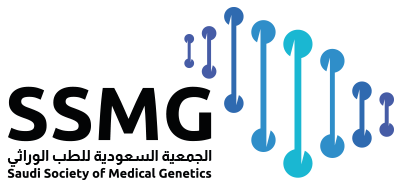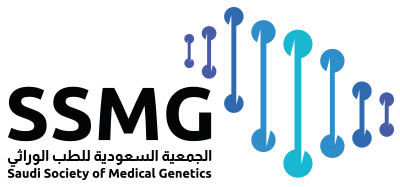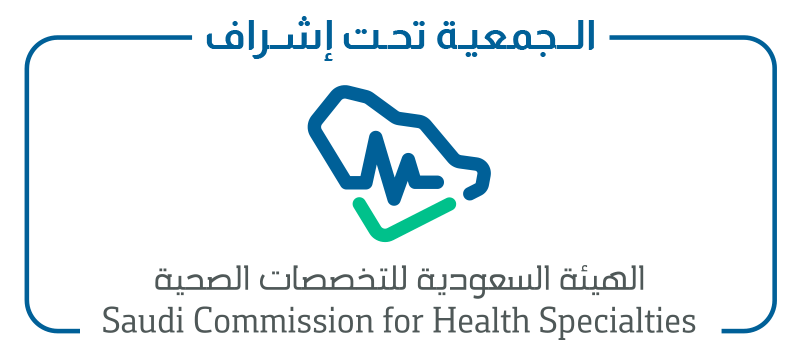عمركم البيولوجي قصة يرويها جسدكم… فكيف نصغي لها؟
الكاتب
معالي د. مريم مطر
المراجع
3. A comprehensive look at the history of age-testing, particularly biological age estimation.
Early Observations & Beginnings (1960s–1970s): Scientists noticed that DNA methylation patterns change with age.
4. Schumacher, A. (2009). A pioneering study linking methylation and aging. [pmc.ncbi.nlm.nih.gov, en.longevitywiki.org]
5. Bocklandt, S., et al. (2011). Development of a saliva-based clock using 3 CpG sites, achieving ~±5 years accuracy at age prediction. [en.wikipedia.org]
6. First-Generation Epigenetic Clocks (circa 2013).
7. Hannum Clock (2013): Developed at UCSD; based on 71 CpGs in blood and trained on ~650 individuals. [en.longevitywiki.org]
8. Horvath’s Pan-Tissue Clock (2013): Steve Horvath at UCLA created the landmark clock using 353 CpGs, applicable across 51 tissues, with median error ~3.6 years. [en.wikipedia.org]
9. PhenoAge (2018, Levine et al.): Combines methylation data with clinical biomarkers (e.g., blood glucose), estimating phenotypic rather than just chronological age. [pmc.ncbi.nlm.nih.gov]
10. GrimAge (2019, Horvath et al.): Integrates methylation-derived plasma protein levels and smoking history to predict lifespan and disease risk.
11. DunedinPACE (2020): Tracks rate of aging rather than cumulative age, trained on a longitudinal cohort from Dunedin, NZ.
12. Pan-mammalian clocks: Use conserved CpG sites to estimate age across different mammal species.
13. Histone mark-based clocks (2025 onward): New tools that rely on histone modifications rather than DNA methylation.
14. CheekAge (2024): Buccal swab-based clock predicting mortality risk comparably to PhenoAge.
15. Brain-age clocks, using MRI or EEG, estimate cognitive aging via imaging and neural patterns.
16. Commercialization and Consumer Tests (From 2017 onward).
17. Zymo Research’s myDNAage (~$299 blood/urine) based on Horvath’s clock.
18. Elysium Health’s test (2019) based on PhenoAge.
19. Tally Health (2023) offers CheekAge in-home kits using cheek swabs.
20. DunedinPACE / PoAm : يُقَيِّم “معدل الشيخوخة” فعليًا عن طريق تتبع 19 علامة جسمية على مدى 20 عامًا (من أعمار 26 إلى 45) في نيوزيلندا، مما يتيح تقديرًا أفضل للمخاطر الطويلة الأمد مثل الإصابة بأمراض القلب والسكتة.
21. Future frontier: As 3rd-gen clocks mature, we’ll see further precision, early disease detection, and maybe routine clinical use.
22. Proteomic analysis : Instead of looking at DNA or gene expression, this test examines the proteins circulating in your blood plasma—giving a dynamic snapshot of organ and system health.
23. Organ-specific aging : By profiling thousands of plasma proteins, the assay generates a real-time “organ age” for your heart, liver, kidneys, brain, etc.
24. Dynamic health tracking : Genetic tests show predisposition, and clinical markers (BP, cholesterol) are baseline snapshots, but proteomic profiling reveals how your body functions right now.
25. Personalized feedback loops : You could see which organ is “aging” faster—like your kidneys or arteries—and adapt lifestyle actions accordingly (diet, exercise, stress management).
26. Early adoption : Research hospitals and elite longevity clinics are piloting tests from companies like Olink, SOMAscan, and Vero.
27. Cost and consumer future : At present, these tests range from $400 to $800, but some startups aim to offer them to consumers for around $200 with one vial of blood.
28. Clinical caution : Experts say the science is promising, but the data still has noise, and more validation is needed before routine clinical use.
29. Precise interventions : Knowing organ-specific aging patterns could help your doctor—or you—make smarter decisions, like tweaking alcohol intake for artery health or boosting probiotics for gut aging.
30. Early disease prevention : It might one day help you catch issues like early-stage cancer or kidney dysfunction before symptoms appear
31. فيما يلي شرح علمي مفصّل للتقنية المعروفة بـ “ساعة CpG الإيبجينية” (DNA methylation clocks)، التي تُستخدم لقياس العمر البيولوجي بدقة عالية.
32. يُقصد بـ CpG المناطق التي تلي فيها قاعدة السيتوسين جوانين (CytosinephosphateGuanine) في سلسلة DNA، والتي تشكل مواقع لتثبيت نمط ميثيلة (–CH₃) على السيتوسين.
33. حوالي 70–80% من CpG في الجينوم تكون ميثيلة، لكن الأنماط تتغير مع كل تقدم في العمر—فبعض المواقع تزداد ميلاً، وأخرى تنقص بشكل متسق مع الزمن.
34. تُقاس مستويات الميثيلة عبر آلاف مواقع CpG باستخدام تقنيات مثل Microarray أو Bisulfite-sequencing.
35. تُبنى نماذج إحصائية باستخدام Elastic Net regression (نوع من الانحدار المنظم) لاختيار مواقع CpG الأكثر ارتباطاً بالعمر الزمني، ومن ثم تَحصَل كل CpG على وزن (β) معين.
36. لحساب العمر البيولوجي:حيث b0b_0 هو ثابت إنترسيبت، وN عدد مواقع CpG المختارة (قد تصل إلى 353 في Horvath’s clock).
37. يطلق على هذه النماذج تسميات مثل Horvath clock (2013، 353 CpGs) أو Hannum clock (2013، 71 CpGs)، وكل نموذج يحدد اختلافًا بسيطًا لتطبيقه على نوع معين من الأنسجة.
38. تؤسس على آلاف التغيّرات الصغيرة والموزونة عبر مواقع متوزعة في الجينوم، وهذا يعزز الدقة والموثوقية أكثر من أي مؤشر واحد.
39. النماذج متعددة الأنسجة — خصوصًا Horvath — صُممت لمقاومة الفروق بين عيّنات الدم والأنسجة الأخرى، وتعطي معدل خطأ متوسط ~±3–5 سنوات.
40. دربت الساعة على أكثر من 8,000 عينة من 82 مجموعة بيانات تغطي 51 نوع نسيجي في مراحل عمرية متفاوتة (من الجنين للبالغين).
41. باستخدام Elastic Net، تم تضييق الاختيارات من عشرات الآلاف من CpG إلى 353 موقعًا يعكّشان العمر إما بزيادة الميثيل (193 موقعًا) أو نقصانها (160) مع التقدّم في السن.
42. يتم جمع مستويات الميثيل مع أوزانها (β coefficients) حسب المعادلة:
43. إذ أن التغيرات سريعة في الطفولة وتتراجع بشكل خطي في البالغين.
44. متعددة الأنسجة : تعمل بنفس الدقة عبر الدم، الجلد، الدماغ، الكبد، الخ…، وتسمح بمقارنات عمرية بين الأعضاء المختلفة في جسم واحد.
فاعلية العُضيات في تعزيز الطب الشخصي
الكاتب
د. وفاء الطلحي
المراجع
- Sato, T., Vries, R. G., Snippert, H. J., et al. (2009). Single Lgr5 stem cells build crypt–villus structures in vitro without a mesenchymal niche. Nature, 459(7244), 262–265. https://doi.org/10.1038/nature07935
- Zhao, Z., Chen, X., Dowbaj, A. M., et al. (2022). Organoids. Nature Reviews Methods Primers, 2, 94. https://doi.org/10.1038/s43586-022-00174-y
- Chakraborti, T., Banerji, C. R. S., Marandon, A., et al. (2025). Personalized uncertainty quantification in artificial intelligence. Nature Machine Intelligence, 7, 522–530. https://doi.org/10.1038/s42256-025-01024-8
- Verstegen, M. M. A., Coppes, R. P., Beghin, A., et al. (2025). Clinical applications of human organoids. Nature Medicine, 31, 409–421. https://doi.org/10.1038/s41591-024-03489-3
- Zhao et al., (2022). Nature Reviews Methods Primers, 2, 94. https://doi.org/10.1038/s43586-022-00174-y
- Nature Medicine, (2025). Clinical applications of human organoids. https://doi.org/10.1038/s41591-024-03489-3
- Lancaster, M. A., & Knoblich, J. A. (2014). Organogenesis in a dish: modeling development and disease using organoid technologies. Science, 345(6194), 1247125. https://doi.org/10.1126/science.1247125
- Pașca, A. M., Sloan, S. A., Clarke, L. E., et al. (2015). Functional cortical neurons and astrocytes from human pluripotent stem cells in 3D culture. Nature Methods, 12(7), 671–678. https://doi.org/10.1038/nmeth.3415
- Giandomenico, S. L., Sutcliffe, M., & Lancaster, M. A. (2021). Generation and long-term culture of advanced cerebral organoids. Nature Protocols, 16(2), 579–602. https://doi.org/10.1038/s41596-020-00433-w
- Igarashi, R., Oda, M., Okada, R., et al. (2025). Generation of human adult hepatocyte organoids with metabolic functions. Nature, 633, 165–172. https://doi.org/10.1038/s41586-025-08861-y
- Fujii, M., Clevers, H. (2020). Synthetically engineered stem-cell-derived organoids: toward precision therapy. Cell Stem Cell, 26(5), 681–684. https://doi.org/10.1016/j.stem.2020.04.010
- Meier, M. A., Nuciforo, S., Coto-Llerena, M., et al. (2022). Patient-derived tumor organoids for personalized medicine in a patient with rare hepatocellular carcinoma. Communications Medicine, 2(1), 80. https://doi.org/10.1038/s43856-022-00150-3
- Yang, B., Li, Z., Yang, Z., et al. (2025). Recapitulating hypoxic metabolism in cartilaginous organoids. Nature Communications, 16, 2711. https://doi.org/10.1038/s41467-025-57779-6
- Birtele, M., Lancaster, M., & Quadrato, G. (2025). Modelling human brain development and disease with organoids. Nature Reviews Molecular Cell Biology, 26, 389–412. https://doi.org/10.1038/s41580-024-00804-1
- Recaldin, T., Steinacher, L., Gjeta, B., et al. (2024). Human organoids with an autologous tissue-resident immune compartment. Nature, 633, 165–179. https://doi.org/10.1038/s41586-024-07791-5
- Means, J. C., Martinez-Bengochea, A. L., Louiselle, D. A., et al. (2025). Rapid and scalable personalized ASO screening in patient-derived organoids. Nature, 638, 237–247. https://doi.org/10.1038/s41586-024-08462-1
- Mansour, A. A., Gonçalves, J. T., Bloyd, C. W., et al. (2018). An in vivo model of functional and vascularized human brain organoids. Nature Biotechnology, 36(5), 432–441. https://doi.org/10.1038/nbt.4127
- Ikeda, M., Doi, D., Ebise, H., et al. (2024). Validation of non-destructive morphology-based selection of cerebral cortical organoids. Stem Cell Reports, 19, 1635–1646. https://doi.org/10.1016/j.stemcr.2024.09.005
- Paşca, S. P. et al. (2019). Reliability of human cortical organoid generation. Nature Methods, 16(1), 75–78. https://doi.org/10.1038/s41592-018-0255-0
- Zhong, Z., Quiñones-Pérez, M., Dai, Z., et al. (2025). Human immune organoids to decode B cell response. Nature Materials, 24, 297–311. https://doi.org/10.1038/s41563-024-02037-1
- (2022). New Approaches in Personalized Oncology. World Health Organization Reports. https://www.who.int/
- (2023). Guideline on quality, non-clinical and clinical aspects of medicinal products containing genetically modified cells. European Medicines Agency. https://www.ema.europa.eu/
- Saudi Vision 2030. (2021). National transformation program. https://www.vision2030.gov.sa
- Ministry of Health KSA. (2023). Health Sector Transformation Program. https://www.moh.gov.sa
- Saudi Human Genome Program. (2022). https://shgp.sa
- Alsaedi, A., & Alharbi, K. (2021). Trends in consanguinity in Saudi Arabia: Implications for health policy. Annals of Saudi Medicine, 41(1), 12–18. https://doi.org/10.5144/0256-4947.2021.12
- Ministry of Communications and Information Technology. (2022). Digital Health Strategy. https://www.mcit.gov.sa
- Saudi National Health Institute. (2023). R&D investments in digital health. https://www.snih.gov.sa
- Research Development and Innovation Authority (RDIA). (2023). National priorities for health innovation. https://www.rdia.gov.sa
- AlFayyad, M. (2023). Ethical governance for biobanks in Saudi Arabia. Journal of Health Ethics, 19(2), 125–134.
- KAUST Smart-Health Initiative. (2022). Integrating AI and multi-omics for personalized medicine. https://smarthealth.kaust.edu.sa
- (2024). Next-generation healthcare under Vision 2030. https://www.neom.com
- AlYami, A. (2023). Digitizing precision care: Bench-to-bedside integration in Saudi Arabia. Saudi Medical Journal, 44(5), 412–420. https://doi.org/10.15537/smj.2023.5.11325
- Cancer Research UK. (2023). FORESEE trial summary. https://www.cancerresearchuk.org/about-cancer/find-a-clinical-trial/a-trial-using-tumour-organoids-to-help-choose-treatment-in-breast-cancer-foresee
- Institut Curie. (2023). TRIPLEX project overview. https://institut-curie.org/page/clinical-research-project-triplex
- van de Wetering, M., Francies, H. E., Francis, J. M., et al. (2015). Prospective derivation of a living organoid biobank of colorectal cancer patients. Cell, 161(4), 933–945. https://doi.org/10.1016/j.cell.2015.03.053
- Sachs, N., Papaspyropoulos, A., Zomer-van Ommen, D. D., et al. (2019). Long-term expanding human airway organoids for disease modeling. EMBO Journal, 38(4), e100300. https://doi.org/10.15252/embj.2018100300
- Berkers, G., van Mourik, S., Vonk, A. M., et al. (2019). Rectal organoids enable personalized treatment of cystic fibrosis. Cell Reports, 26(7), 1701–1708.e3. https://doi.org/10.1016/j.celrep.2019.01.068
- Yui, S., Nakamura, T., Sato, T., et al. (2018). Functional engraftment of colon epithelium expanded in vitro from a single adult Lgr5+ stem cell. Nature Medicine, 18(4), 618–623. https://doi.org/10.1038/nm.2695
- Pringle, S., Maimets, M., van der Zwaag, M., et al. (2016). Human salivary gland stem cells functionally restore saliva production. Cell Stem Cell, 20(1), 140–149. https://doi.org/10.1016/j.stem.2016.10.005
- ViaCyte, Inc. (2023). Clinical trial NCT03163511. https://clinicaltrials.gov/ct2/show/NCT03163511
- Mandai, M., Watanabe, A., Kurimoto, Y., et al. (2017). Autologous induced stem-cell–derived retinal cells for macular degeneration. New England Journal of Medicine, 376, 1038–1046. https://doi.org/10.1056/NEJMoa1608368
- O’Rourke, D. M., Nasrallah, M. P., Desai, A., et al. (2017). A single dose of peripherally infused EGFRvIII-directed CAR T cells mediates antigen loss and induces adaptive resistance in patients with recurrent glioblastoma. Science Translational Medicine, 9(399), eaaa0984. https://doi.org/10.1126/scitranslmed.aaa0984
- Vision 2030. (2023). National Transformation Program Report. https://www.vision2030.gov.sa
- Alkuraya, F. S. (2013). Genetics and genomic medicine in Saudi Arabia. Molecular Genetics & Genomic Medicine, 2(5), 369–378. https://doi.org/10.1002/mgg3.86
- Saudi Human Genome Program. (2022). https://shgp.sa
- AlAli, A., & Al-Ali, R. (2021). Pharmacogenomic variation in Gulf populations. Frontiers in Genetics, 12, 728132. https://doi.org/10.3389/fgene.2021.728132
- Ministry of Health, KSA. (2022). Health Sector Transformation Program. https://www.moh.gov.sa
- (2023). Annual Digital Health Investment Report. https://www.rdia.gov.sa
- National eHealth Strategy. (2022). Saudi Digital Health Vision 2030. https://www.moh.gov.sa
آفاق جديدة لعلاج الامراض الوراثية مبكرا (الطب الشخصي في طب الأطفال)
الكاتب
د. محمد المناعي
المراجع
- Thompson & Thompson Genetics in Medicine8th Editio
https://www.fda.gov/medical-devices/in-vitro-diagnostics/precision-medicine



